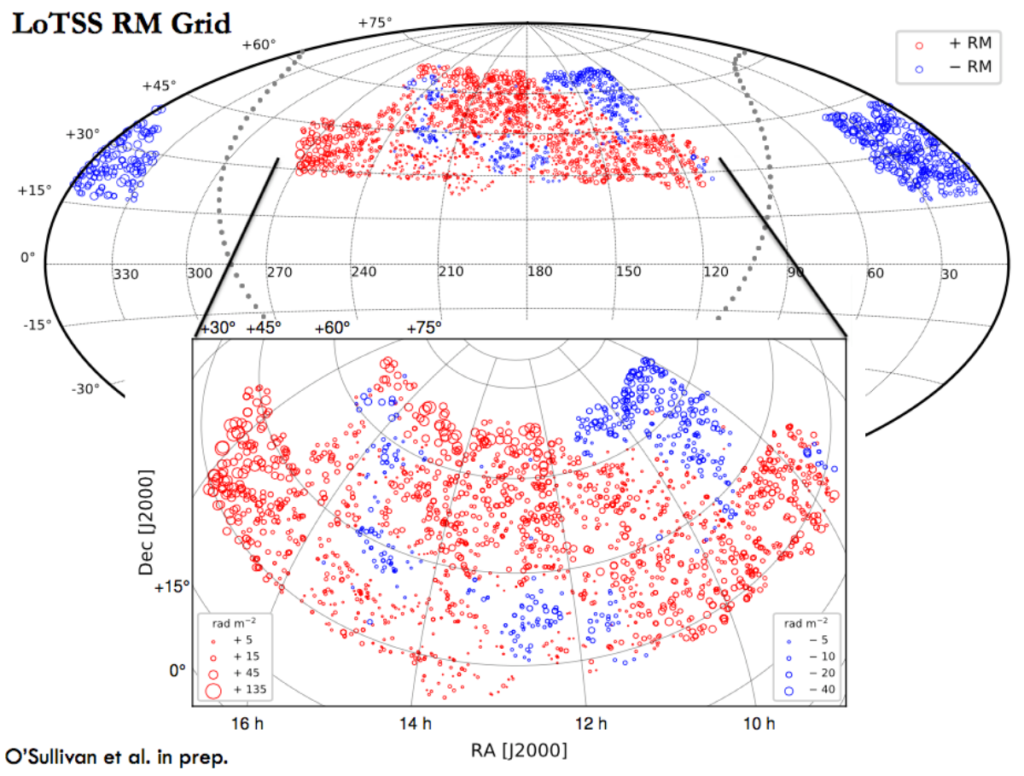RM Grid Task Force
Chair: Shane O’Sullivan (Dublin City University)
Magnetic fields pervade the cosmos, and we want to understand how this happened. Cosmological simulations predict that measuring the magnetic field in filaments and voids of the cosmic web, away from clusters of galaxies, can help distinguish between a primordial or astrophysical (i.e. outflows from AGN/galaxies) origin. Although measuring weak magnetic fields in intergalactic space is difficult, LOFAR provides the ability to measure the Faraday rotation effect of these weak fields with unprecedented accuracy, especially when considering close pairs of radio sources (e.g. O’Sullivan et al. 2019, 2020). This work demonstrates the unique capability of LOFAR for the study of cosmic magnetic fields.
The goal of the MKSP RM Grid Task force is to use the combined expertise and resources of the MKSP Working Groups to produce a catalog of Faraday rotation measures of discrete radio sources from the LOFAR Two-Metre Sky Survey (LoTSS) data. This catalog will then be used by the various MKSP working groups to address the particular science goals of the individual working groups.
 LoTSS Rotation Measure (RM) Grid
LoTSS Rotation Measure (RM) Grid
The LoTSS (LOFAR Two-Metre Sky Survey) DR2 sky area covers 5720 sq. deg. which is split between two fields: the 13 hr field which is a contiguous area of 4240 sq. deg. and the 0 hr field of 1480 sq. deg. The associated RM catalog is in preparation and is expected to contain ~2,500 high-precision RM values (O’Sullivan et al. 2021, in preparation).